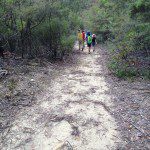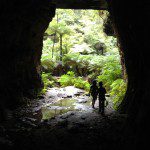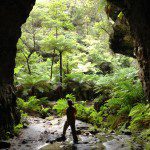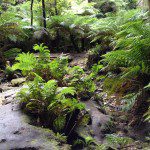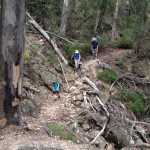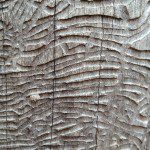Walking the path of light
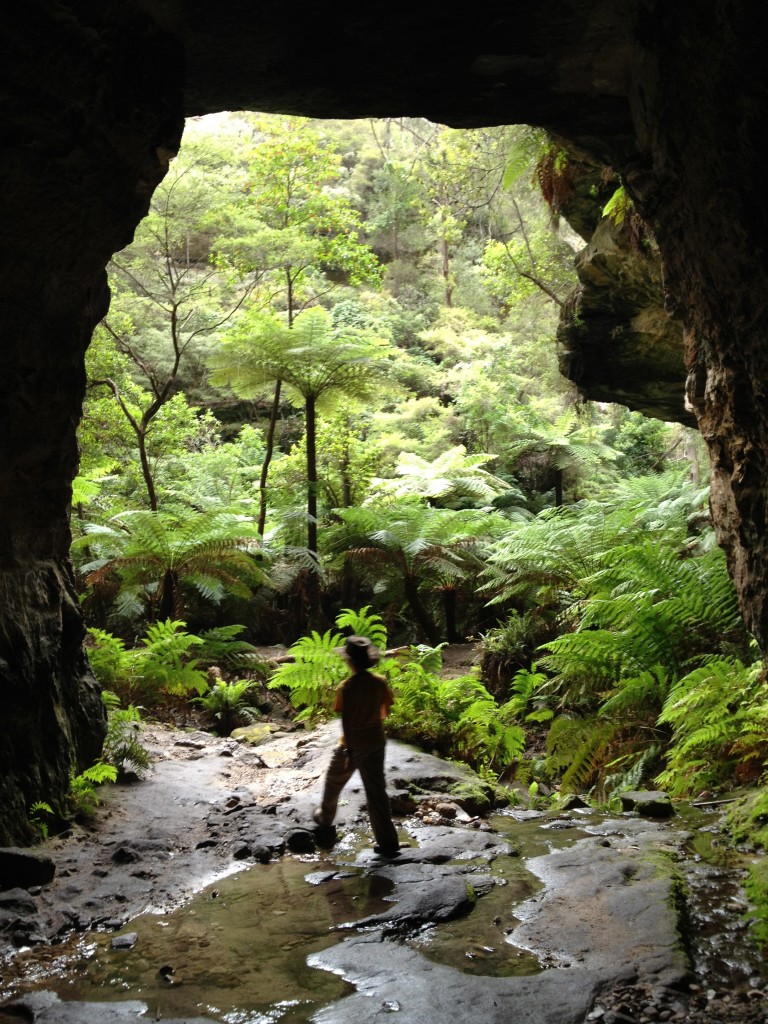
Just over 100 years ago shale oil was a significant industry in the Wolgan Valley in the Blue Mountains. Shale oil had been known of for centuries but was largely used for it’s purported medicinal qualities: one learned genleman opined that it was said to have been “tried by divers persons in Aches and Pains with much benefit.”. Things changed with the advent of the Industrial Revolution when shale oil was used for lighting, particularly as whale oil became increasingly scarce.
The township of Newnes was the shale oil centre and the industry was significant enough to lead to the building of its own railway line. But by the 1930s the availability of cheaper crude oil led to the closure of the works and the rail line was abandoned until it was pulled up and the rails were sent to Europe to form beach defences. (And just to show that everything moves in cycles, shale oil is once again in the news as a possible replacement for our diminishing supplies of crude oil.)
Today the path taken by the old railway line forms a pleasantly graded track interspaced with the occasional reminder of its industrial past. Drains are made of thick cast iron riveted into pipes – either old train boilers or the product of the same works. There are bridges reinforced with enormous iron girders and roughly built sandstone block retaining walls.
Our aim though was more natural than industrial – we set out to find some local residents who had taken advantage of an abandoned tunnel to set up home. The larvae of the fungus gnat likes dark, damp, quiet conditions – and has found them in the middle of a long curved tunnel. Where the train track once ran there is now a stream bubbling along in the pitch dark and above the stream are hundreds of tiny larvae, each shinning with a cold blue light to attract their prey. Turn off your torch and the glow-worms create a constellation of points of light; galaxies gathering around particular cracks and faults in the rock. I’ve never seen glow worms in such atmospheric conditions, just our little group and the darkness of the tunnel with the stream running past – magical.
The other end of the glow-worm tunnel lets out into a fern-filled bowl, perfect for a lunch stop. The contrast created by emerging from the black tunnel into the verdant green of the ferns is just stunning. After eating we headed on intending to make a loop around the cliffs the tunnel cuts through and eventually back to the car park. This turned out to be a beautiful but exhausting walk. The track follows the cliff-side above the Newnes valley and has wonderful views out over the green fields on one side and on the other the whorled sandstone cliff walls. Eventually you come to the old coach road and follow that back up through a ravine echoing with the call of bellbirds to finally rejoin the glow-worm track. We were thrilled to run into a family of Lyre birds along the way.
The signage said that the loop was 7.5 km but none of us believed that – it felt significantly longer. It’s a very beautiful walk but you need to allow 3-4 hours for the loop no matter your normal walking speed. We emerged at the other end with a few aches and pains, which might have done with some shale oil treatment, but all agreed it was one of the best Blue Mountains walks we’d done.
